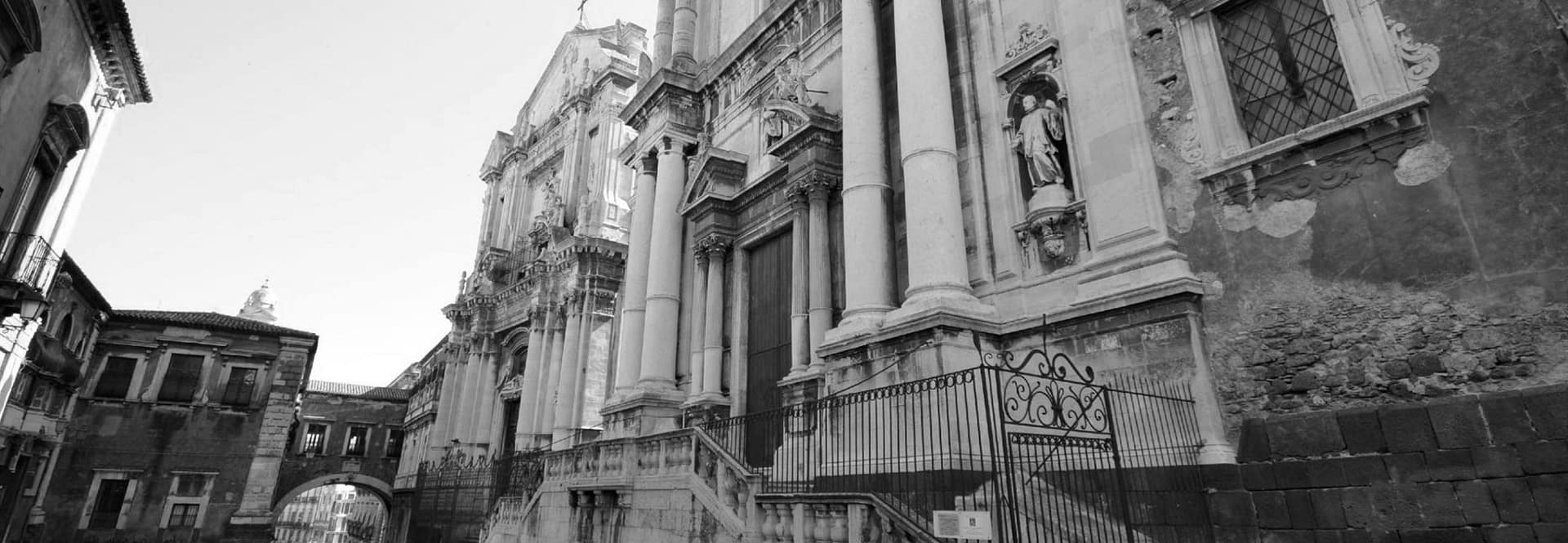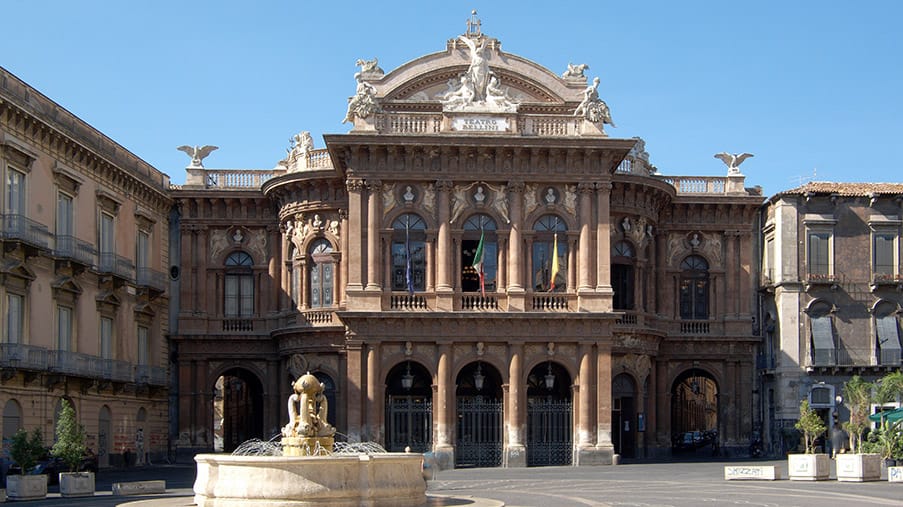
Crociferi street
Crociferi street is one of the most monumental environments of baroque Catania. The arch of San Benedetto is located here, which according to tradition was built in a single night in 1704 by the Benedictines; the majestic church of San Benedetto (1704-13), placed on a high staircase; the Jesuit College, now home to the Art Institute; the church of San Giuliano, the convent of the Crociferi fathers. Of grandiose proportions, the church of San Nicolò was begun in 1687, but remained unfinished. The facade is very suggestive, with mighty interrupted columns. The interior, now used as a Memorial for the Fallen, is impressive for its vastness.
St.Giuliano church is considered the pearl of the reconstruction of XVIII century of Catania, it gives onto Crociferi street and is ascribed to Vaccarini, who realized it between 1739 and 1751. The façade, concave at the centre, is varied by a loggia of completion which is placed at the height of the second row of the façade. On the pediment, which dominated the entrance portal, there are two female allegorical figures. The parvis, closed by an iron fence is decorated by a weave of white and black pebbles. At the top, the cupola is wrapped up by a polygonal portico, which reminds the one of St.Chiara Church. Inside there is a huge octagonal area filled in of charming golden light, in which the wide chapel, the altars and masterpiece of XIV and XVII centuries take place.
At the entrance of this XVIII century Church emerges the precious decorated portal, one of the most important architectural works of Catania. According to the source, the portal originally constituted the main entrance of the ancient Cathedral, destroyed by the earthquake of 1693. For its stylistic features, the Portal can be considered a unique model in Sicily, because it does not have any similarities with Arab-Norman churches. In the XVIII century arrangement, the church was built close to the corner of a bastion of the XVI century, which incorporates an old zone, identified with St.Agata’s prison by religious traditions. Inside the church, two relics are treasured, which are of fundamental importance for the cult of the Saint: a coffin in which were kept the sacred remains during the troubled journey from Constantinople to Catania, and two rocks of lava stone with the Saint’s feet print.









